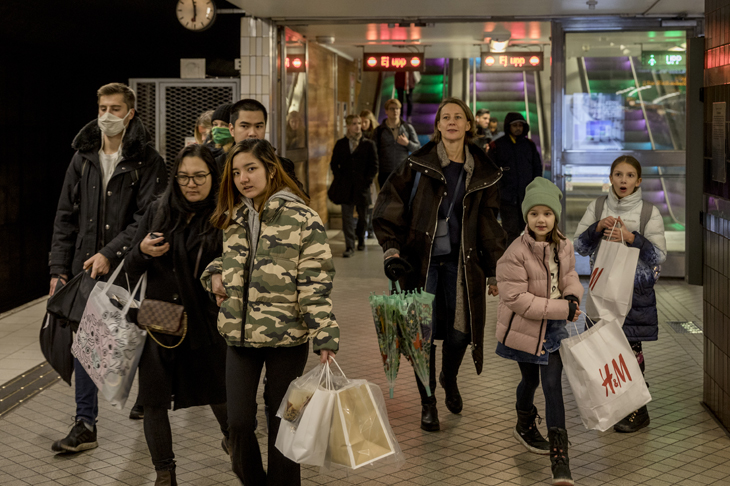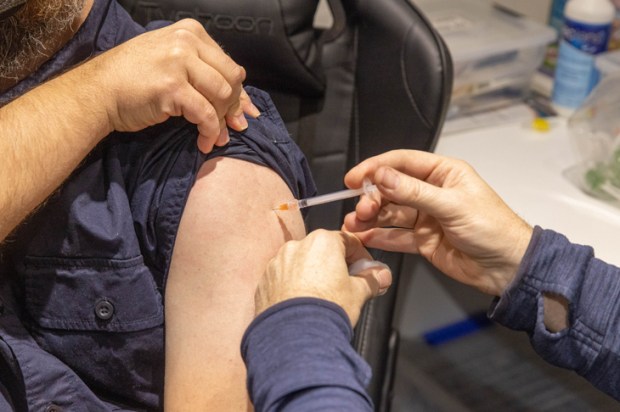It’s amazing how often Sweden still crops up in conversations. It didn’t impose tough lockdown, kept primary schools and core economic activities functioning, issued clear guidelines and relied on voluntary social distancing and personal hygiene practices to manage the crisis. For harsh lockdowns to be justified elsewhere, Sweden had to be discredited. Hence the harsh criticisms of Sweden’s approach last year by the New York Times, Newsweek, USA Today, CBS News and others.
But with Sweden’s demonstrable success, goalposts have shifted. Every time it’s mentioned as a counter to Europe’s high Covid-toll lockdown countries, the response now is: ‘But their Nordic neighbours did much better. Look at Denmark’. Let’s ‘interrogate’ this argument.
First off, the situation in any other country is irrelevant to assessing the utility of modelled projections on which the lockdowns were based. The 16 March 2020 Neil Ferguson model from Imperial College London (ICL), by now deservedly infamous, precipitated lockdowns with grim predictions of 510,00 British and 1.2 million American dead in an unmitigated spread of the virus. The second sentence of the summary boasted its epidemiological modelling ‘has informed policymaking in the UK and other countries’. In an article in Nature last June, the team claimed lockdowns had ‘averted 3.1 million deaths’ in eleven European countries as of 4 May 2020.
Researchers at Uppsala University adapted the ICL model and on 30 April estimated that, without mitigation, Sweden’s Covid deaths would hit 96,000 by the end of May. The actual number on 1 June was just 4,403. Questioned about the disparity by Matt Ridley in the House of Lords on 2 June, Ferguson insisted: ‘they did not use our model, they didn’t adapt our model’ and ‘We had no role in parameterising it’. ICL itself tweeted sniffily on 6 May, ‘Professor Ferguson and the Imperial Covid-19 response team never estimated 40,000 or 100,000 Swedish deaths’. This was a disingenuous terminological inexactitude. For the ICL team did a follow-up analysis (Report #12, 26 March 2020) that included projections for all countries in an Excel sheet as an appendix. For Sweden they projected 30,400-42,500 deaths with social distancing lockdowns, and 66,000-90,000 without mitigation. Although not specified, Phillip Magness makes an informed inference for the American Institute for Economic Research (AIER) of mid-June 2020 as the timeframe. The actual figure was 5,370 on 1 July 2020.
Now, back to the Nordics. Sweden’s mortality rate is indeed thrice that of Denmark. But Denmark’s in turn is thrice that of Norway and five times higher than Iceland’s. Lockdowns cannot be the explanation for Denmark’s better performance than Sweden’s in light of its own identical disparity with Norway and still greater disparity with Iceland. Moreover, as shown in no fewer than 35 studies collated by the AEIR, globally and among US states Covid mortality is policy invariant, there’s no correlation between key Covid metrics and jurisdictions with severe and soft, mandatory and voluntary social distancing restrictions and guidance. The clear logical inference is that variations are due to factors other than lockdown like Iceland being an isolated island country – a bit like Australia and New Zealand, come to think of it. Danish and US researchers list 16 different factors (including lighter lockdowns) as possible explanations for Sweden’s worse toll among the Nordics. Not all are of equal weight but they are ‘thought-provoking’: average age of Covid deaths, co-morbidities, obesity levels, urbanisation, immigrant populations, crowded working and living conditions, care homes for the elderly (Sweden’s nursing home population is 50 per cent bigger than Denmark’s), cross-facility mobility of healthcare staff, hospital capacity and medicine stocks, climate, seasonality, vitamin D deficiency, etc.
For example, in some countries including the UK, the virus spread rapidly when holidaymakers returned from Alpine ski resorts believed to be super-spreader sites. Turns out the other Scandinavian countries’ 2020 mid-winter holiday was one week earlier than Stockholm’s, before the virus exploded in the resorts. Gothenburg and Malmo were also one to two weeks earlier and again the same difference in Covid metrics can be seen between them and Stockholm. The epidemic was also already well advanced in Sweden by the time the other Nordics locked down. Swedes travel internationally in higher numbers than their neighbours. Similarly, Sweden had a comparatively milder flu season in 2019, with 2.5 per cent lower deaths than the five-year average. Denmark and Finland had 1 per cent higher mortality and Norway about the same. This left more Swedes vulnerable as ‘dry tinder’ in 2020. Even so, Sweden’s slightly higher age-adjusted 2020 mortality returned it to the same level as 2015 and was lower than most European countries. Catastrophic not. Looked at together, 2019 and 2020 put Sweden in the middle of the Scandinavian pack in excess deaths, and she has tracked below her 2015-19 average since 7 February (-2 per cent on 16 May compared to Denmark’s +2 per cent).
‘What about other Nordics’ is an attempt to deflect from the embarrassment of the failed catastrophism if Sweden did not lock down. The incontrovertible reality is Sweden is in the middle of the European pack, currently ranked 24th in Covid mortality per capita, with the top three of Hungary, Bosnia & Herzegovina and Czechia (once ‘hailed as among Europe’s most successful in tackling the pandemic’, wrote the Guardian) double its rate and, in order, Belgium, Italy, Poland, UK, Spain, France and Portugal all higher than Sweden. With increasing frequency, Florida and Texas are added to Sweden as examples of falls in Covid infection, hospitalisation and mortality curves without savage lockdowns. Early international border closures, before the virus is seeded in the community (they have little beneficial impact after the virus has taken hold, as shown by Noah Carl for Canada, Hungary, Argentina and Colombia), and soft social distancing and personal hygiene practices based on voluntary guidance, are the most cost-effective and least liberties-violating measures.
The Swedish example teaches us four important lessons. First, be open and transparent, not dogmatic and authoritarian. Second, provide clear guidance to the people, including the limits of scientific certainty and the ‘known unknowns’, as Donald Rumsfeld said. Third, humility in admitting mistakes, as with failure to protect Sweden’s care home residents, sustains public trust better than Victoria-style blame-shifting. Finally, transfer the responsibility for risk assessment and management back to ‘we the people’: we are the best placed to make informed choices that directly affect our lives and livelihoods today and in the future.
Got something to add? Join the discussion and comment below.
Get 10 issues for just $10
Subscribe to The Spectator Australia today for the next 10 magazine issues, plus full online access, for just $10.
You might disagree with half of it, but you’ll enjoy reading all of it. Try your first month for free, then just $2 a week for the remainder of your first year.












Comments
Don't miss out
Join the conversation with other Spectator Australia readers. Subscribe to leave a comment.
SUBSCRIBEAlready a subscriber? Log in